Basic Aztec Facts: The Aztec Flower
To the Aztecs (the Nahua people), a flower was way more than a pretty plant. Their word for it was xochitl , and it was a tiny piece of the divine, a snapshot of the whole universe. To get the Aztecs, you have to get their thing for flowers.
A Flower Is The Whole Universe
The Aztecs saw the universe as art, made by a sacred energy called teotl . Think of teotl as a cosmic artist, always painting and singing the world into being.
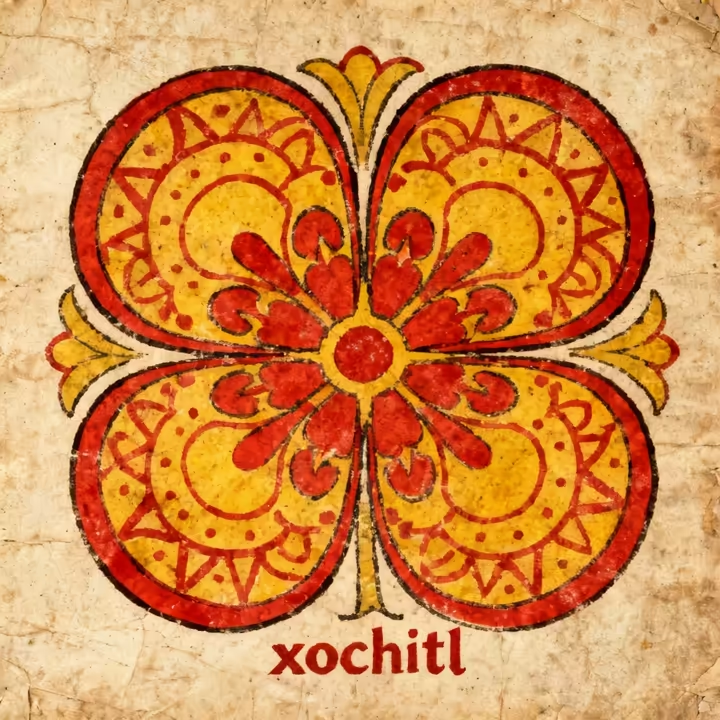
(The Aztec glyph for 'xochitl', or flower. Simple, but it held the whole cosmos.)
The universe was teotl's "flower and song" ( in xochitl, in cuicatl ). So, every blossom on Earth was a little piece of that divine art, a peek at creation itself. You can explore how this idea shaped Aztec poetry and rhythm in Aztec Music.
Pretty, But Doomed
This got a bit sad, though. The Nahua sages saw life on Earth, or Tlalticpac ("on the slippery earth"), as a temporary, dream-like place. The philosopher-king Nezahualcoyotl wrote that our lives were fragile paintings, fated to be erased.
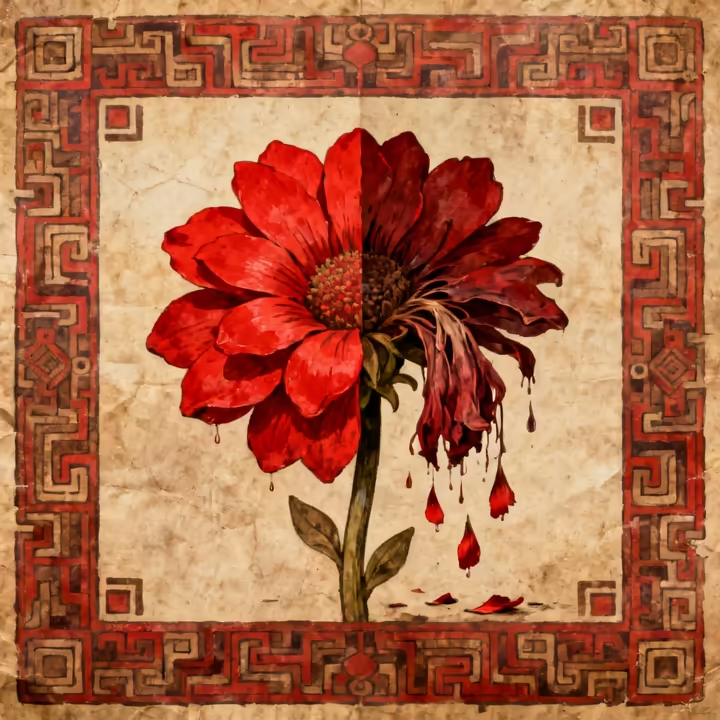
(A beautiful gift from the gods... that won't last long.)
The flower, beautiful but short-lived, was the perfect symbol for this. It reminded them that everything on earth was fragile and would soon fade.
The Only Real Thing
So how do you find truth ( nelli ) in a world they thought was fake? Their answer was in xochitl, in cuicatl , "flower and song."
Making poetry or art, your own "flower and song," was how you connected with the divine energy of teotl . Flowers were both a symbol of truth and the path to finding it.
The Flower Gods
Of course, they had gods for this stuff. These gods represented all the creative and wild feelings that flowers brought out.
Xochipilli: The Flower Prince
The main man was Xochipilli, the "Flower Prince." His name comes from xochitl (flower) and pilli (prince). He was the god of art, beauty, song, dance... all the fun stuff.
A famous statue of him shows him in a trance, his body covered in carvings of sacred plants like hallucinogenic mushrooms. His worship involved reaching a temicxoch , or "flowery dream," to tap into cosmic creativity.
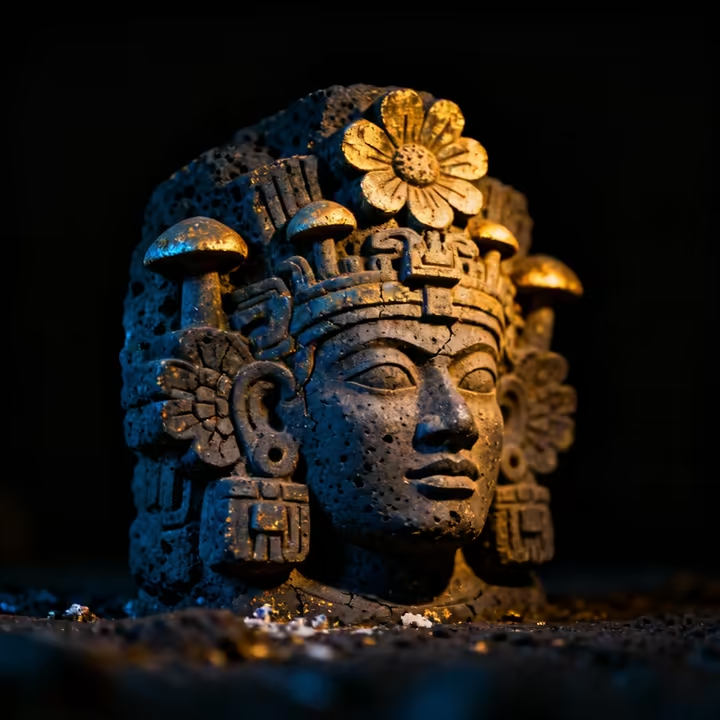
(Xochipilli, the Flower Prince, looking... relaxed.)
Xochiquetzal: The Flower Feather
The female counterpart was Xochiquetzal, the "Flower Feather." Her name mixes xochitl with quetzalli , the super-precious feather of the quetzal bird. She was the goddess of fertility, sensuality, and craftsmanship, and always shown as young and beautiful.
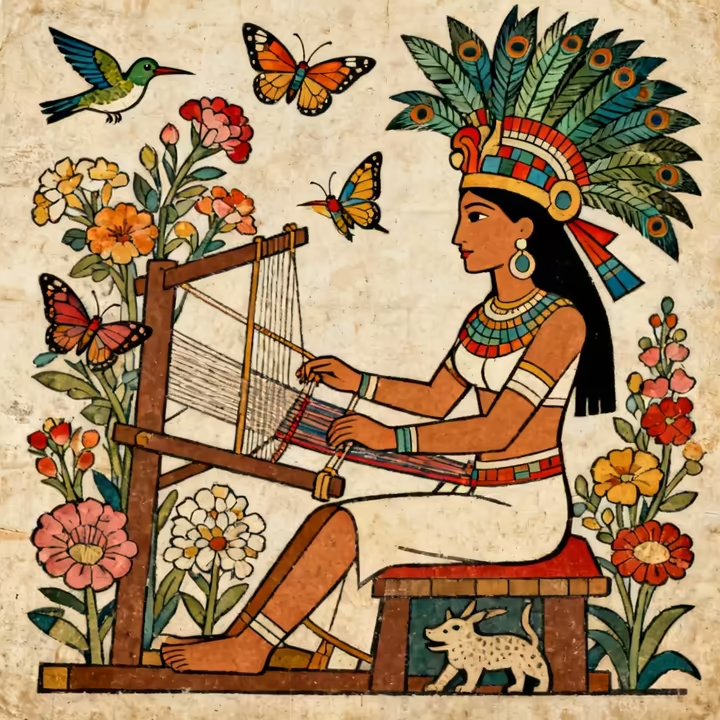
(Xochiquetzal, goddess of love, beauty, and making cool stuff.)
She was the patron of weavers, artisans, and lovers. Basically, she connected making art with making life, and was all about earthly pleasure and fragrant flowers.
Flowers for the Scary Gods, Too
Flowers were also for the scary gods. The great war god Huitzilopochtli’s temple was covered in flower garlands during festivals.
Rituals for Tezcatlipoca, the unpredictable god of fate, were also decorated with flowers. These flowers brought life and beauty into the world of war and death, keeping the universe in balance.
The Flower War
The strangest use of flower symbolism was the Xochiyaoyotl , the "Flower War." They weren't about gaining land or money, they were ritual battles fought for the gods.
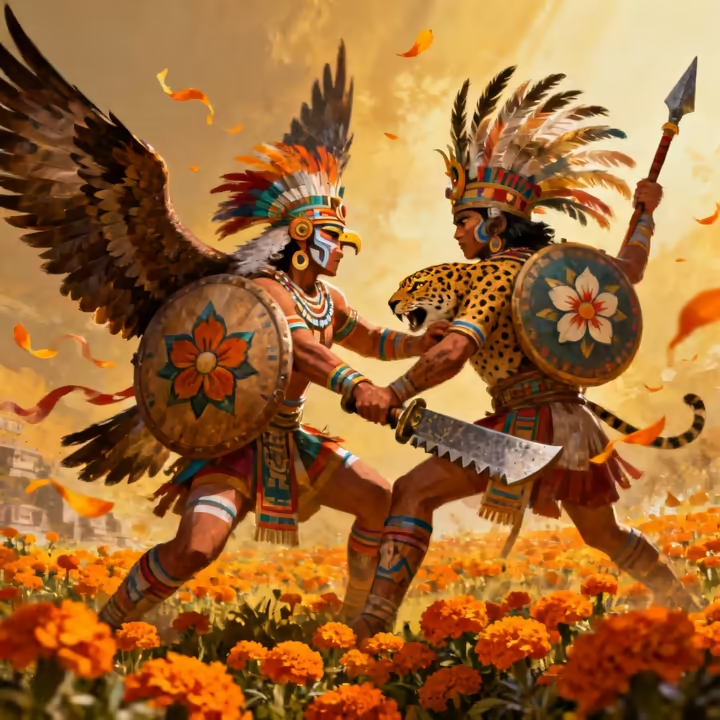
(The Flower War. A lot less peaceful than it sounds.)
These were pre-arranged battles at sacred sites. The whole point was to capture the most precious possible offering for the gods: enemy warriors.
A Cosmic Garden
The Aztecs saw these wars in a strange way. The battlefield was a divine garden where the gods came to pick flowers... and the bravest warriors were those flowers.
Capturing an enemy was like picking a flower. Poetic texts called captives "war flowers." This turned the grim business of war into a kind of cosmic gardening.
Paying a Debt with Blood
This was tied to the Aztec belief in cosmic debt. The gods had sacrificed themselves to create the world, and humans owed them for it. This debt, nextlahualli , was repaid with offerings, especially blood, called chalchihuatl , or "precious water".
The hearts of captured warriors were the best gift, called "flowers of god." Dying this way was known as a xochimiquiztli , a "flowery death," a noble end that promised a great afterlife with the sun.
Meet the Flowers
The Aztecs also loved specific flowers. Each one had its own story and sacred meaning.
Cempasúchil (The Marigold)
No flower is more famous than the cempasúchil , the Mexican marigold. Its Nahuatl name, cempōhualxōchitl , means "twenty-flower." Its fiery orange color linked it to the sun god, Tonatiuh.

(The cempasúchil, or marigold. The original welcome mat for souls.)
A legend says the sun god Tonatiuh turned a woman named Xóchitl into this golden flower after her warrior lover, Huitzilin, died. Huitzilin was reborn as a hummingbird. When he visited the flower, it opened and released its powerful scent.
This story tied the marigold to love, death, and memory. Its sunny color and strong smell were thought to make a path for the souls of the dead to follow home.
Acocoxochitl (The Dahlia)
The dahlia was also important. Its Nahuatl name, acocoxochitl , means "water pipe flower." Why? Because its hollow, strong stems were literally used as pipes for water. (Very practical).
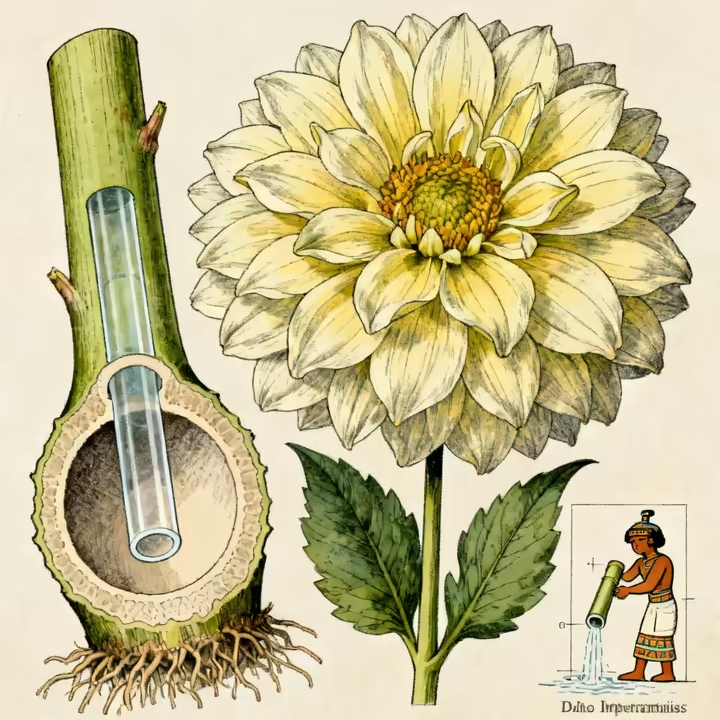
(The dahlia. Pretty *and* useful for plumbing.)
Its usefulness and beauty made the dahlia a symbol of power and royalty. Its tubers were food, and it had medicinal uses, which is probably why it’s the national flower of Mexico today.
Omixochitl (The Tuberose)
In contrast to the sunny dahlia was the mysterious tuberose, or omixochitl . The name means "bone flower," likely because of its waxy white blossoms. The tuberose blooms at night, and its strong scent gets stronger after dusk.
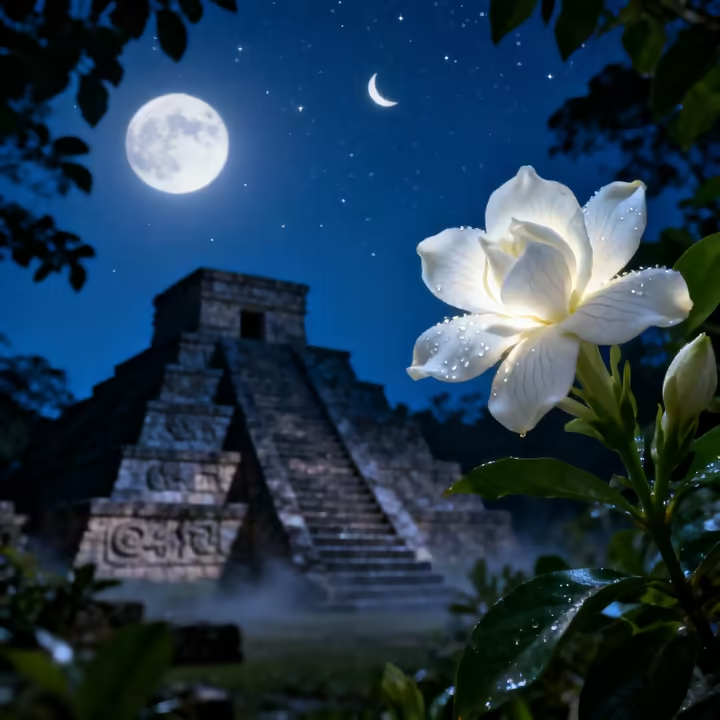
(The omixochitl, or 'bone flower.' Blooms when you're asleep.)
Its night-owl nature linked it to magic, love, and the dark. It was sacred to the goddess Xochiquetzal and used in her rituals.
Coanenepilli (The Passionflower)
The passionflower, or coanenepilli ("snake tongue"), was valued for its medicinal uses. Aztec healers used it as a pain reliever and to treat poisons.
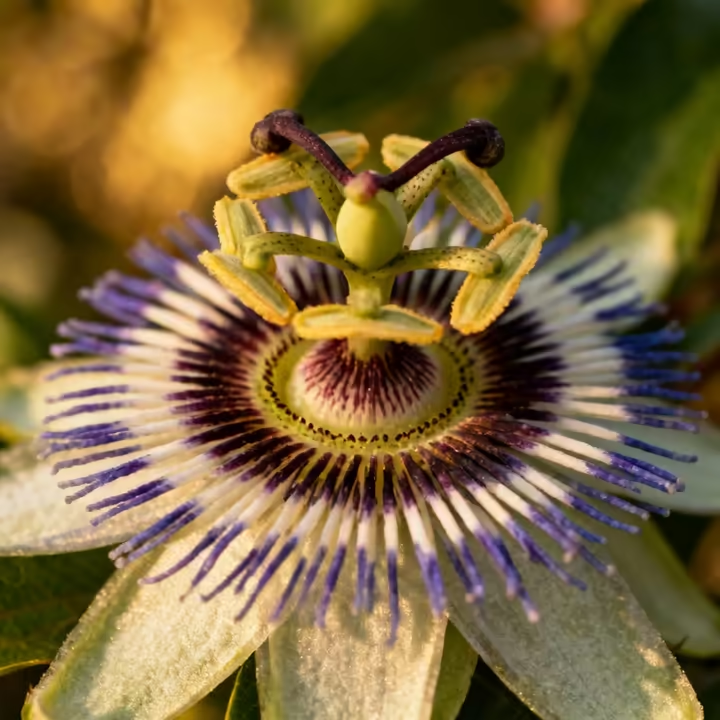
(The passionflower. Looks complicated, and it is.)
The flower has a super complex structure. For the Aztecs, its crazy shape might have been a mini-model of their complicated universe.
Flowers Everywhere
The Aztecs' love of flowers showed up everywhere, in their gardens, art, and buildings.
Royal Gardens
Great rulers showed off their power by creating amazing botanical gardens. Moctezuma's gardens at Huaxtepec were legendary, filled with plants from all over the empire.
These gardens were also labs where plants were studied for medicine. The Spanish were amazed by how organized it was.
Art and Architecture
Floral designs were a constant theme in Aztec art. You can see them on pottery, textiles, and in their sacred books (codices).
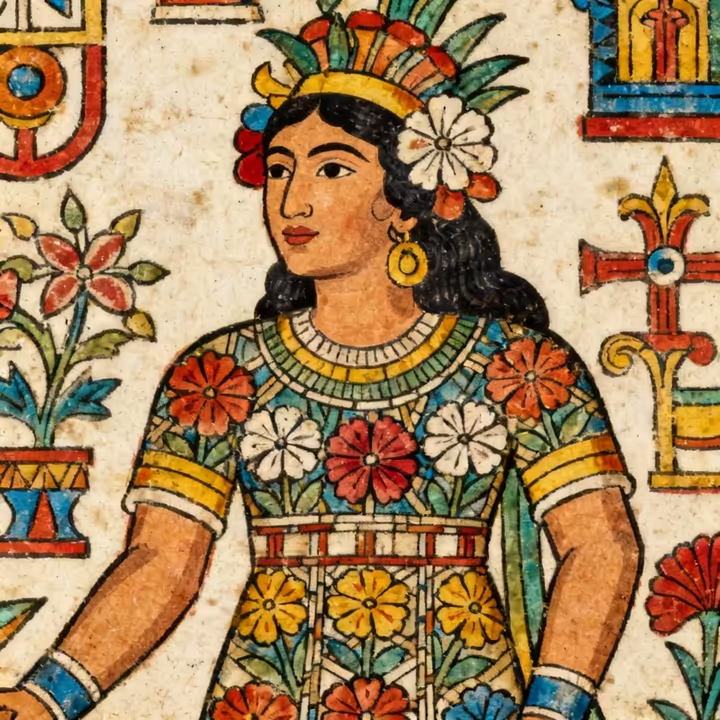
(Even the gods' clothes had flower patterns.)
They carved flower designs into huge stone monuments, too. The flowers could represent anything from the souls of dead warriors to holiness itself.
The Sun Stone is a Flower
The best example is the Piedra del Sol , or Sun Stone. It’s a massive, complex map of Aztec cosmology. At the center is the sun god, Tonatiuh, framed by the glyph Nahui Ollin ("Four Movement"), which is our current era.
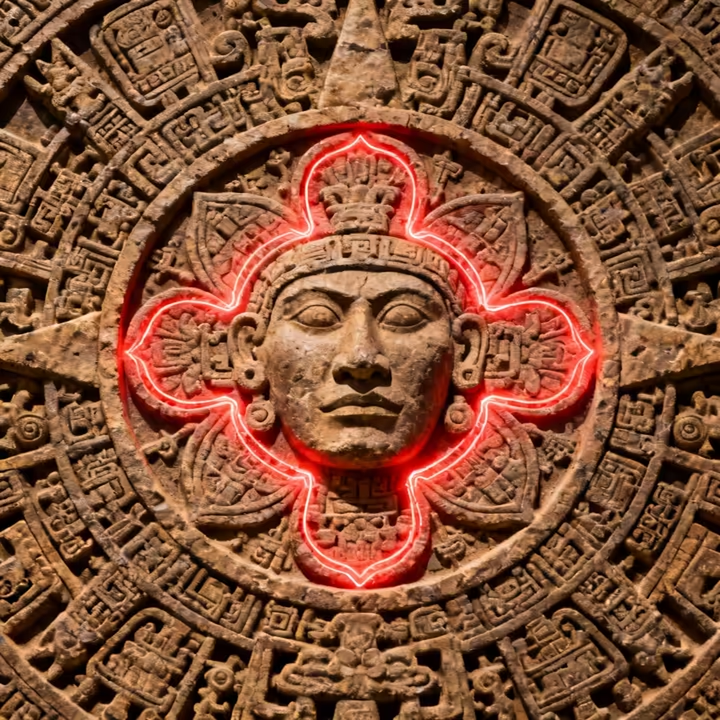
(Surprise! The Aztec calendar is basically a giant stone flower.)
And that key glyph? It’s a four-petaled flower. This puts the xochitl right at the heart of their universe. The whole stone is one big cosmic blossom.
The Flower Legacy
The Aztec empire fell, but their love for flowers didn't. The symbolism survived and changed over time.
Aztec Flower Tattoos
Today, Aztec flower tattoos are popular, inspired by ancient codices and stone carvings. For many people, especially those of Mexican heritage, these tattoos are a powerful link to their ancestry.
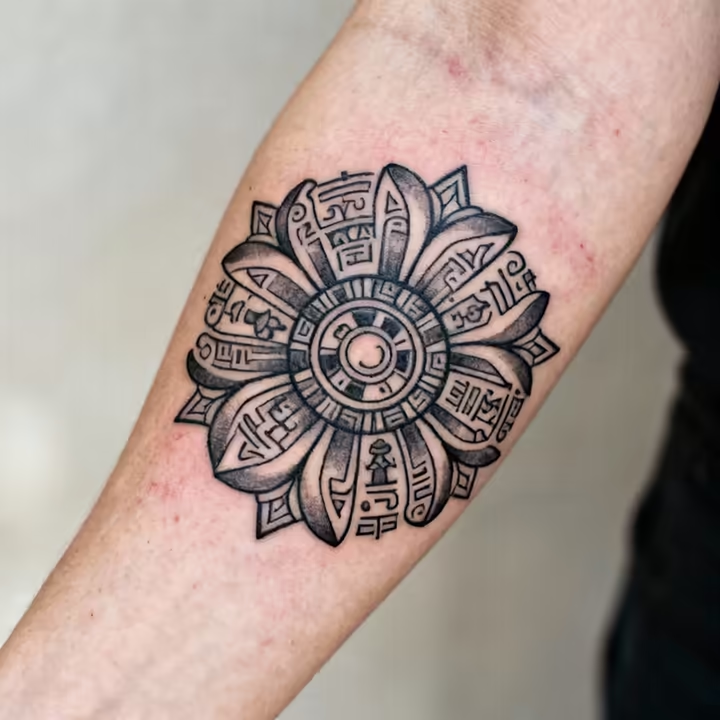
(Wearing history on your sleeve, literally.)
A flower tattoo might symbolize life's fleeting beauty. Or it could represent a warrior's strength, friendship, or freedom.
Día de Muertos
The clearest link is the marigold ( cempasúchil ) in the annual Día de Muertos , or Day of the Dead. Like their ancestors, families build altars ( ofrendas ) and make paths of marigold petals.
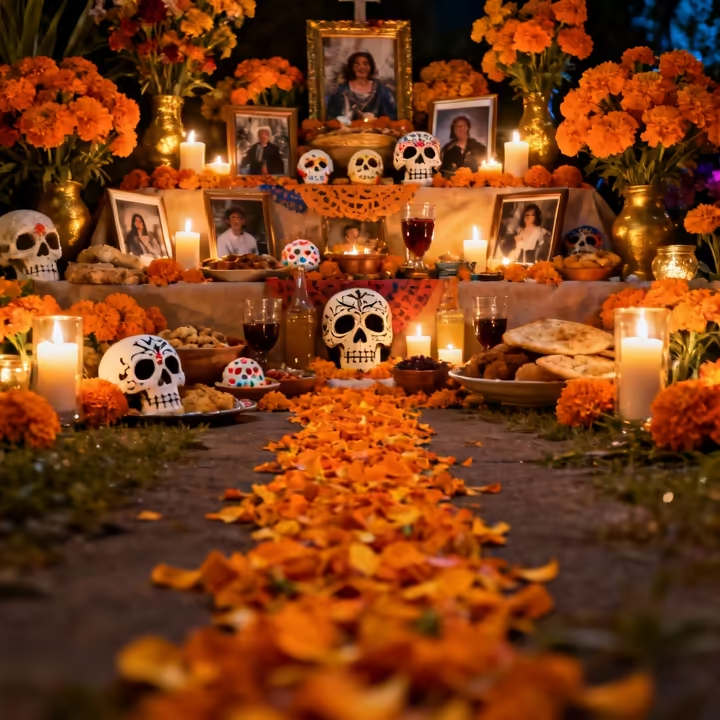
(The cempasúchil still guides the spirits home today.)
The belief is the same: the flower's strong scent and sunny color guide souls back for their yearly visit. Every November, the old bond between the flower, sun, and dead is renewed.
So the Aztec xochitl was a big deal. It was divine energy, a symbol of life's sad beauty, and the only truth in a dream-like world. From a battlefield to a priest's vision, the flower was how the Aztecs saw everything, life, death, and the whole cosmos.